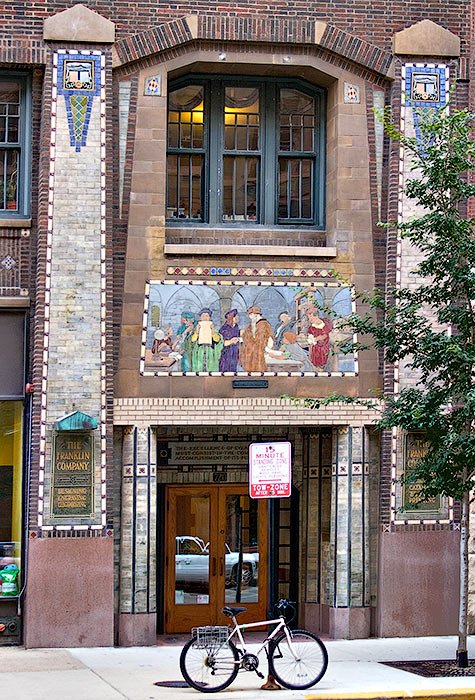#7001. Historic Brick Facade with Decorative Panel: An Example of Decorative-Narrative Architecture
This impressive facade represents an excellent example of early 20th century decorative architecture with Neo-Romanesque elements. The building features carefully designed brickwork, where red brick forms the main wall surface, while sandstone is used for framing and accents. Particularly eye-catching is the arched second-floor window with its characteristic brick archivolt and stone imposts.
The central element of the composition is a colorful ceramic panel located below the window. It depicts a multi-figure scene in historical costumes, adding a narrative element and cultural value to the facade. On both sides of the entrance are decorative columns with small tile inserts at the top, adorned with geometric patterns and symbolic images.
The entrance group is framed with wooden doors with glazed elements, creating a harmonious transition between exterior and interior. The lower part of the facade is made of darker material, visually strengthening the building's foundation and creating a grounding effect.
When designing a modern facade, several techniques can be borrowed from this historical example: using contrasting materials to create visual rhythm, integrating artistic elements as focal points, and thoughtful framing of window and door openings to add depth and expressiveness to the facade. Even on a small section of facade, an interesting composition can be created by combining different textures and decorative elements.
